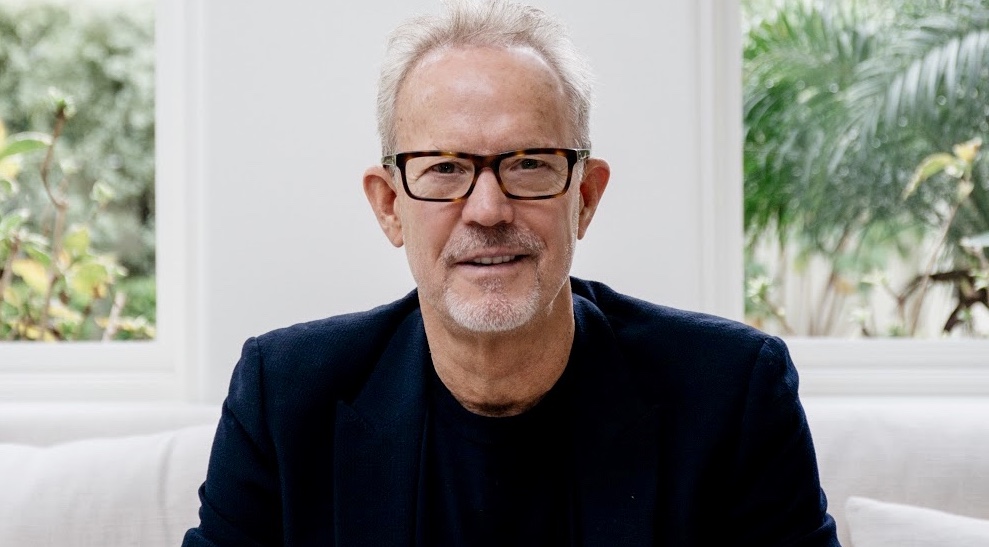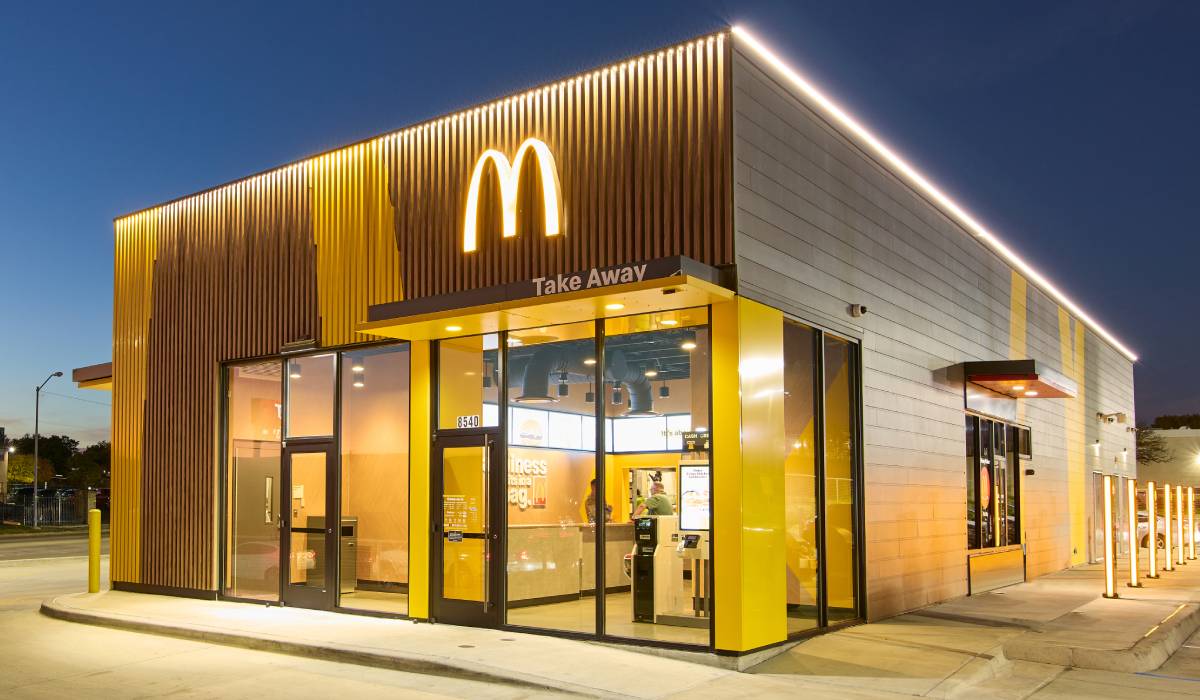Subscribe to “Fast Forward”: Apple Podcasts | Spotify | Google Play | Stitcher
Few industry professionals can lay claim to having established the fast-casual category quite like Greg Dollarhyde. The restaurant veteran spent time in executive positions at major full-service brands like TGI Fridays and Rusty Pelican before he acquired Baja Fresh in 1998 and grew it to nearly 300 locations—at which point he sold the concept to Wendy’s. He later oversaw growth at both Zoës Kitchen and Veggie Grill as their CEO, and now spends his time investing in the industry and sitting on the boards for Veggie Grill and Blaze Pizza, among other companies.
In a recent episode of QSR’s podcast “Fast Forward,” Dollarhyde reflected on his career and offered lessons he’s learned along the way that can help guide younger restaurant entrepreneurs.
1. Identify what you’re good at
Dollarhyde says he’d gone broke twice before the age of 23 after trying to start a couple different restaurant concepts. A chance to attend Cornell’s Hotel School gave him a fresh start, and after getting his MBA there Dollarhyde jumped into restaurant management. He was CFO at TGI Fridays when it filed its initial public offering in 1983, and later served as an executive at Pizza Hut, Rusty Pelican Restaurants, and Kenny Roger’s Roasters.
But in the late 1990s, Dollarhyde realized he wanted a new course for his life. He says he took a three-day trip to the desert, where he asked himself some fundamental questions: What was he good at? What was he not good at? What did he like to do and want to do?
In particular, he understood that he was not skilled at starting concepts, but rather at growing them.
“What I really felt like I was good at was to look down the road, see what needed to get done, assemble the people and the materials and the money and the plan, and synthesize a strategy and get people to believe in that strategy and throw in and go build something—but not to do it from scratch,” he says.
2. Find a hole in the market
Dollarhyde’s first stop after that trip to the desert was Panda Express. He connected with founders Andrew and Peggy Cherng and helped them with brand strategy, including with their labor models and their chicken processing. His time there made one thing very obvious: “Good food fast was the future,” he says.
Having spent some time in casual dining, Dollarhyde believed there were challenges facing that side of the industry—namely, prices were going to have to go up, real estate was getting more expensive, and labor laws were squeezing companies on that front. A gap was forming between casual and fast food.
“You had a great price-point potential because you were well below casual, but still above fast food,” he says. “You could get good real estate; you didn’t need drive thru because people weren’t expecting drive thru. People weren’t expecting delivery, but they really wanted takeout. So you had to have visibility, access, signage, traffic, and parking, all the key elements of real estate. If you had that, you had a really good shot at creating the right kind of food.”
So Dollarhyde made his first leap into what is now called fast casual. He partnered with Catterton Partners and Oak Investors to purchase Baja Fresh, an emerging Mexican concept that had 45 locations at the time.
3. Understand the business you’re getting into
Before Dollarhyde and his partners sold Baja Fresh to Wendy’s in 2002 for $275 million, they’d grown the concept to 250-plus locations and helped solidify fast casual as one of the restaurant industry’s most exciting stories.
But Baja Fresh’s rise to prominence coincided with that of another Mexican fast casual: Chipotle. And Dollarhyde acknowledges that Chipotle’s customization model scared him; guests’ ability to build their meal in front of their eyes simplified the ordering process and restricted the complicated process of accommodating modifications.
Of course, customization became a calling-card for the fast-casual industry. But these days the category is getting too complex, Dollarhyde says. He adds that too many people open restaurants without considering how challenging it is—and often without the necessary experience.
“You want to start a fast-casual restaurant? Go work in one for two years,” he says. “If your idea is that good and that forward-thinking, it’ll be around 18 months from now. But go do the work. Go work the front door. Go work the line. Go be there at 11:30 at night and clean the kitchen with the guys and then see how it feels. Because that’s the business.”
4. Listen to the universe—and your customers
Dollarhyde went on to serve as CEO of Zoës Kitchen from 2007 to 2011 and then the same job at Veggie Grill from 2011 to 2016. Both brands impressed upon Dollarhyde the importance of high-quality menus, but he also learned how critical it was to pay attention to customers’ wants and needs.
At Veggie Grill, for example, the team had to overhaul the menu to improve its nutrition. They claimed a 100 percent plant-based menu, but not necessarily one that was low-calorie (as Dollarhyde points out, the tastiest way to prepare kale is to marinate it in oil and agave syrup). When the brand released its nutritionals, he says, “all hell broke loose.” Comps dropped 18 points in eight weeks.
“Once that happened, then we really had to just take the whole car apart, literally, and we laid it out on the ground and said, how are we going to rebuild this?” he says. “We’re not going to give up our indulgence. We know that people like it, and there’s way too much sales in these really indulgent items for us to say we’re going to change the whole concept. So my pitch to the board and everybody in the company was, ‘Guys, it’s just time to morph. The universe is saying this, and if we don’t listen, we’re not going to be successful. So let’s go get it.’”
Changing the menu included adapting to new form factors. While Veggie Grill had previously offered plant-based versions of common items like chicken sandwiches and burgers, it didn’t offer bowls until 2014. Now, Dollarhyde says, bowls account for over 20 percent of sales.
“You’ve just got to keep looking ahead and talking to the consumer. You’ve got to keep doing the research. If anybody says, ‘Well, all I know is…,’ I don’t even want to listen to the rest of your sentence, because there is no ‘All I know is.’ What’s really important is you know who that target consumer is, or you know what they’re looking for, or you get a feel for where they’re going.”
5. Bring your A+ game
At Baja Fresh’s peak in the early 2000s, the fast-casual industry wasn’t nearly as competitive as it is today. Not only are there far more brands saturating the marketplace, but operators also have to contend with the various ways guests now expect to access their food, from third-party delivery to mobile ordering and other off-premises occasions.
As such, Dollarhyde points out that anyone hoping to build a successful fast-casual restaurant company has to be ready to give it everything they’ve got.
“The state of play is up,” he says. “You have to bring everything; you’ve got to bring the whole game. You have to bring a consumer connection. You’ve got to bring convenience. You have to bring price value. You have to bring layers of flavor, you have to bring innovation, and you have to do it continually.”
6. Don’t just ride a bandwagon
Looking at the three fast casuals Dollarhyde built into thriving concepts, it’s clear he has a knack for picking successful menu platforms. The Mexican, Mediterranean, and plant-based fast-casual sectors have all deeply influenced the way Americans eat, and Dollarhyde’s brands were each ahead of the trends.
But choosing the right platform to build a business around is easier said than done. Dollarhyde cautions against entrepreneurs jumping onto bandwagons, particularly trendy menu items enjoying their moment in the spotlight. Not only should they consider whether the food is good, what their competitive advantage is, and who their target customer is, but they should also consider a future exit strategy and who they might eventually sell the business to.
Most importantly, though, entrepreneurs must know who their customer base is, Dollarhyde says. And while there are algorithms and databases that can provide that information, he says, nothing provides results quite like running the business.
“First, you have to get a store open,” he says. “I can line up 2,000 people and give them a deck and say, ‘Would you eat at this restaurant?’ Let’s 70 percent say, ‘Yeah, I’ll eat there.’ OK, well, give me your psychographic [and] demographic information for the ones that said yes. And they may never come to the restaurant. You have to open one, and you’ve got to play with it. That is the way it gets done in the restaurant business.”
7. Don’t lose the entrepreneurial spirit
Not too long after Wendy’s acquired Baja Fresh, sales for the fast-casual burrito joint dropped. The brand never really recovered, and in hindsight, Wendy’s four-year stewardship of Baja Fresh was seen as a disaster. It sold the concept in 2006 for just $31 million.
Dollarhyde won’t speculate on what went wrong after his departure, but he believes successful brands need strong entrepreneurs at the helm—not just corporate entities that can fund expansion.
“There’s just something about a man or a woman at the head of a restaurant company with the soul of that company that they built or understand deeply, that they can make something really magical happen,” he says.
He adds that the person doesn’t have to be the founder, and the company doesn’t have to be a startup. He points to Chipotle CEO Brian Niccol and former Domino’s CEO Patrick Doyle as two people who came in with “a shake-up attitude” that got team members to buy in.
Entrepreneurs would be wise to follow one of Dollarhyde’s philosophies in life: “Put out into the universe whatever you want to have happen to you.” Keep doing that, he says, and the universe will start presenting opportunities.
“What do I want out of life? Where do I want to be? And I’m just going to keep putting it out there to people,” he says. “That’s what entrepreneurs do. They could be corporate entrepreneurs—and again, there’s a number of them—or they could just be really good leaders. The industry really has to have that kind of energy in its leadership.”
8. Temper your expectations
Not only does Dollarhyde recognize that starting concepts isn’t his strong suit, but he also acknowledges that he doesn’t want to oversee a giant restaurant corporation. His sweet spot, he says, is the hockey-stick approach: taking something from, say, three locations to 300.
And while other fast-casual entrepreneurs might have different aspirations, Dollarhyde recommends that folks getting into the business today enjoy running the small business that they have and not necessarily swing for the fences.
“Unless it’s really knocking the cover off the ball, stay at seven to 15 [locations], make a couple million dollars a year, go to Paris for vacations,” he says. “Don’t try to build 500 of them, because it’s going to be too challenging.”
Want to learn more about Dollarhyde’s story and his tips for restaurant entrepreneurs? Stream the latest episode of “Fast Forward” above, and access the entire archive by clicking here.









